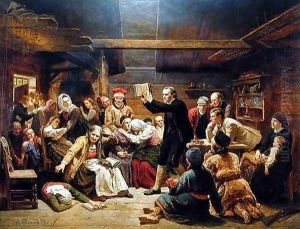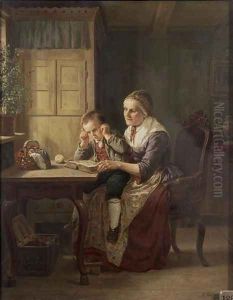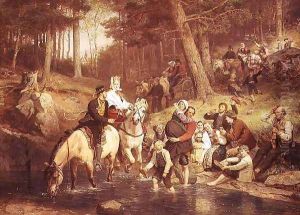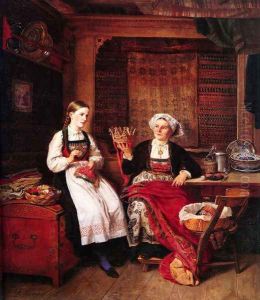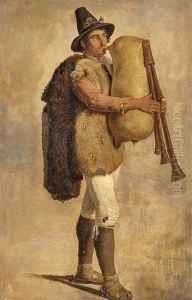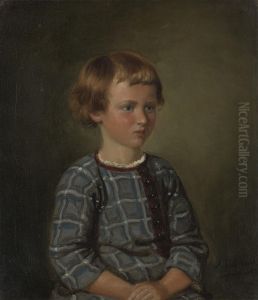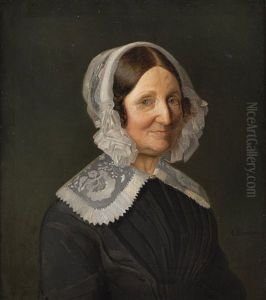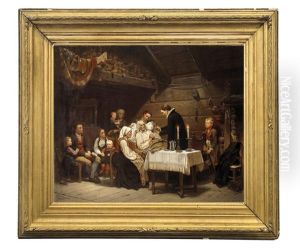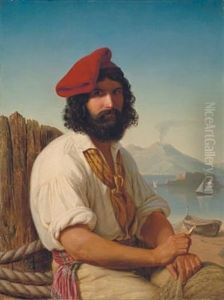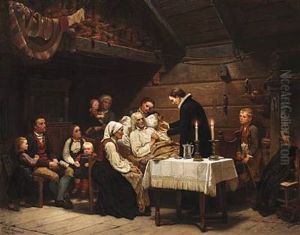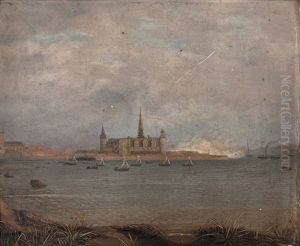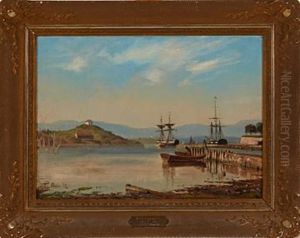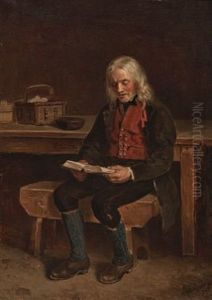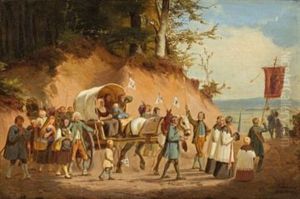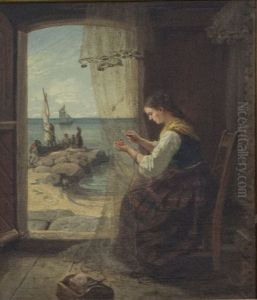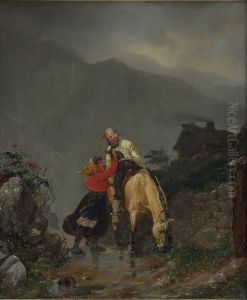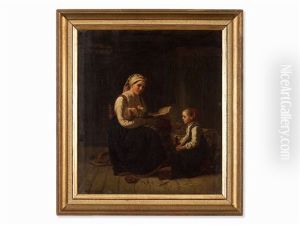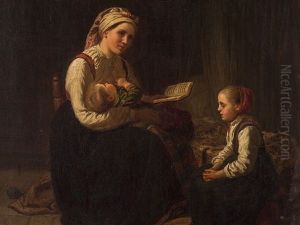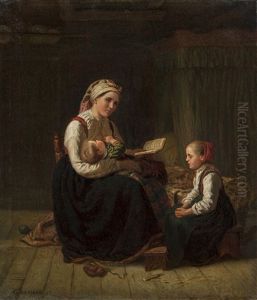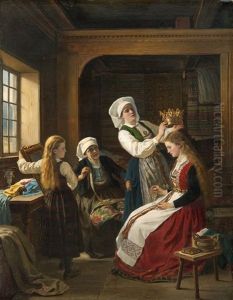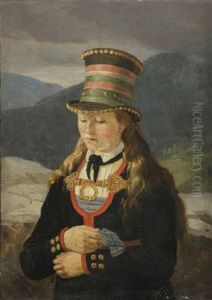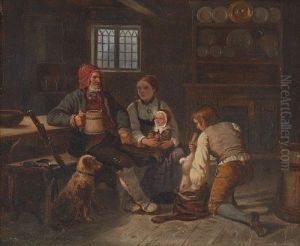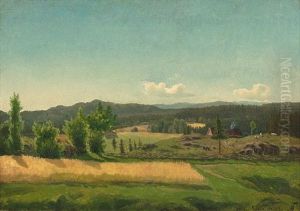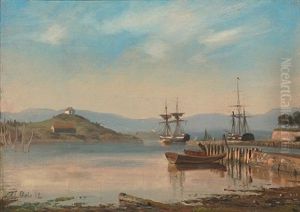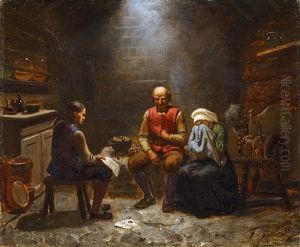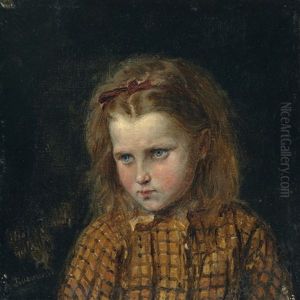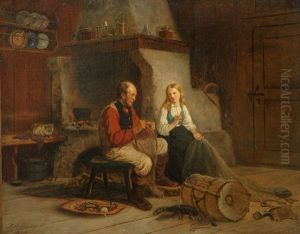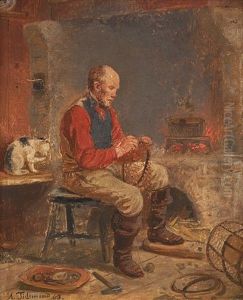Adolph Tidemand Paintings
Adolph Tidemand was a noted Norwegian romantic nationalism painter whose work is often associated with the national romantic movement in Norway. He was born on August 14, 1814, in Mandal, in the south of Norway, to a wealthy merchant family. Tidemand received his initial art education in Christiania (now Oslo), Norway, before he moved to Copenhagen, Denmark to study at the Royal Danish Academy of Fine Arts.
His time at the Academy in Copenhagen was followed by a significant period in Düsseldorf, Germany, where he was influenced by the Düsseldorf school of painting. This period was pivotal for his artistic development. In Düsseldorf, he met fellow Norwegian artist Hans Gude, with whom he would later collaborate on several works that combined Tidemand's figures with Gude's landscapes, creating scenes that are considered quintessential expressions of Norwegian national romantic art.
Tidemand's oeuvre is primarily composed of genre works, portraits, and paintings based on Norwegian folklore, history, and everyday life. His paintings are characterized by their detailed depictions of Norwegian rural life, often idealizing the peasant culture and way of life. Among his most famous works are 'Haugianerne' (The Haugeans, 1852), which depicts a religious movement in Norway, and 'Brudeferd i Hardanger' (Bridal Procession in Hardanger, 1848), created in collaboration with Hans Gude.
Throughout his career, Tidemand continued to receive commissions and accolades. He was appointed a knight of the Royal Norwegian Order of St. Olav and received orders from Sweden and Denmark as well. He became a crucial figure for Norwegian art in the mid-19th century and contributed significantly to the artistic depiction of Norwegian identity.
Tidemand continued to work and exhibit his art until his death. He passed away on August 25, 1876, in Christiania, leaving behind a legacy that would influence generations of Norwegian artists. His works are held in high esteem in Norway and can be seen in various museums and galleries, including the National Gallery in Oslo. Tidemand's art played an important role in the development of a unique Norwegian cultural identity during a period when the country was striving to assert its independence from Sweden.
